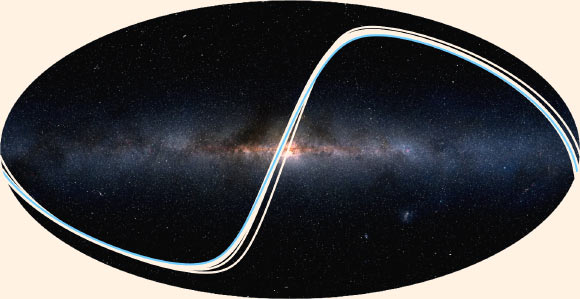Queen’s University Belfast astronomer Robert Wells and co-authors have turned exoplanet-hunting on its head, in a new study that instead looks at how an extrasolar observer might be able to detect the Earth using our current level of technology. At least nine exoplanets, according to the team, are ideally placed to observe transits of Earth.

Wells et al estimate that there should be at least 10 — currently undiscovered — exoplanets which are favorably located to detect the Earth and are capable of sustaining life as we know it. Image credit: NASA.
Wells and his colleagues from Germany and the United Kingdom identified parts of the distant sky from where various planets in the Solar System could be seen to pass in front of the Sun — so-called ‘transit zones’ — concluding that terrestrial planets (Mercury, Venus, Earth, and Mars) are actually much more likely to be spotted than the more distant giant planets (Jupiter, Saturn, Uranus, and Neptune).
“Larger planets would naturally block out more light as they pass in front of their star. However the more important factor is actually how close the planet is to its parent star — since the terrestrial planets are much closer to the Sun than the gas giants, they’ll be more likely to be seen in transit,” Wells said.
To look for worlds where civilizations would have the best chance of spotting our Solar System, the astronomers looked for parts of the sky from which more than one planet could be seen crossing the face of the Sun.
They found that three planets at most could be observed from anywhere outside of the Solar System, and that not all combinations of three planets are possible.

Image showing where transits of Solar System planets can be observed. Each line represents where one of the planets could be seen to transit, with the blue line representing Earth; an observer located here could detect us. Image credit: 2MASS / A. Mellinger / R. Wells.
“We estimate that a randomly positioned observer would have roughly a 1 in 40 chance of observing at least one planet,” said co-author Dr. Katja Poppenhaeger, also from Queen’s University Belfast.
“The probability of detecting at least two planets would be about 10 times lower, and to detect three would be a further 10 times smaller than this.”
Of the thousands of known alien worlds, the team identified 68 exoplanets where observers would see one or more of the planets in our Solar System transit the Sun.
Nine of these planets — HATS-11b, 1RXS 1609b, LKCA 15b, WASP-47b, c, d, e, WASP-68b, and WD 1145+017b — are ideally placed to observe transits of Earth, although none of the worlds are deemed to be habitable.
The study is published in the Monthly Notices of the Royal Astronomical Society.
_____
R. Wells et al. Transit Visibility Zones of the Solar System Planets. MNRAS, published online August 14, 2017; doi: 10.1093/mnras/stx2077







